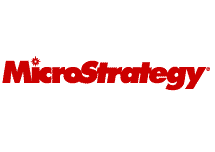 MicroStrategy 9.3 is slated for release this quarter, and it seems that the vital upgrades it provides are all centered on the visualization module Visual Insight, which was already introduced a year ago. Data visualization is one of the driving forces in the BI (business intelligence) market because of it opens the market even to users who are not familiar with statistical analysis or query languages.
MicroStrategy 9.3 is slated for release this quarter, and it seems that the vital upgrades it provides are all centered on the visualization module Visual Insight, which was already introduced a year ago. Data visualization is one of the driving forces in the BI (business intelligence) market because of it opens the market even to users who are not familiar with statistical analysis or query languages.
Vendors of software with strong data visualization modules like Tibco Spotfire and Tableau Software are seeing a lot of growth and improvements in their business. It is expected that the 9.3 release of MicroStrategy will let them jump on the proverbial bandwagon and benefit from the same momentum, with their lengthy list of Visual Insight upgrades. Some of the new features include geospatial density maps that support color coding in order to properly categorize and differentiate geospatial concentrations, such as the proximity of customers to retail stores. An image layout will allow analysts to depict data using a visual context, instead of numbers and figures that are not intuitive to many people.
Now that the number of data visualization possibilities has increased by leaps and bounds, it has become difficult for users to choose the best approach on their own, so the Visual Insight upgrade has the capability to suggest the best visualization options depending on the situation.
MicroStrategy 9.3 also has the ability to simplify the opening of the latest data sources via its integration to Hadoop clusters. While business intelligence vendors used to integrate with the HDFS, MicroStrategy’s new Thrift connector can tap directly into Apache Hive, which is the data warehousing component of the Hadoop framework.
The new Thrift connector supports SQL-like querying, which is interesting considering that Hadoop is not a relational environment. Thrift lets MicroStrategy customers use drag and drop attributes and metrics inherent within Hive. Under the hood, MicroStrategy 9.3 outputs Hive-QL language queries that can fish out data from Hadoop. They can also make the task of comparing or combining data to and from Hadoop easy and simple.
The ability to access big data is one of the sources of interest in big data analytics. This is the reason why MicroStrategy 9.3 adds significant improvements to the 300 plus analytical functions that the platform already supports. The improvement will be done by adding as many as 5 thousand more computations found in the R open-source programming language. The R programming language is preferred by a lot of data scientists who require its capabilities when it comes to storing their large-scale data sets on Hadoop. R is also very popular with majority of analytics and business intelligence vendors, including industry giants IBM SPSS, Oracle, Information Builders, SAP, and Tibco Software.
The MicroStrategy 9.3 also includes improvements in the dashboard and administrative tools, including the added emphasis on self-service. According to the vendor, the new improvements will allow business users to develop dashboards in less than 10 minutes without the need for help from IT. The module for creating dashboards is now flexible and can support both multiple data sets and data visualizations, all in a single page. In the past, it was a challenge to use multiple data sources while applying data visualizations using a single dashboard.
The central theme behind the recent upgrades to MicroStrategy is automation. With their new administrative workflow tool, multiple steps, including cache flushing routines, system restarts, loading processes etc can be consolidated in fewer or a single step that is done automatically. The new improvements will save incredible amounts of time and effort when it comes to administration, and it’s a given fact that manpower and time are both equivalent to lots of money when it comes to businesses.
MicroStrategy 9.3 will debut as part of MicroStrategy Cloud, which will include the BI platform, databases, and data integration features bundled as a web-based service. There will also be a MicroStrategy Cloud Express, which offers a middleground to the paid Platform edition and the free Personal Edition. The difference with Express is that unlike the free edition, it contains all the features of the paid platform edition, but unlike the paid platform one, it doesn’t require ongoing subscription as it functions on a “pay as you go” model.
Hi Xath, great article. Very thorough. I’m part of the Product Management group at MicroStrategy and there are a couple of items in your article that could use some clarification. We’d be happy to give you a product walkthrough. How can I get in touch with you?
Regards